 The MER Filenames - Whats in a Name? (Information Courtesy NASA Ames Research Center) The Caves of Mars | Education Resources | MER Color Index | |||||||||||||||||||||||||
If a picture is worth a thousand words, then it is important to know what language those words are in. Nice pictures from other planets are great, but if one does not know the "context" of a particular image, its value as a piece of scientific data is severely limited. Early in the space age, the Planetary Data System, (PDS) was established to devise a scheme for naming data, including images, from space missions. This is true as well for the MER mission. With this system, the filename contains relevant information regarding an image: What camera took the picture, when it was taken, where it was taken, who requested it, etc.
Each MER image incorporates into the filename the Rover Mission identifier, the Instrument identifier, the SCLK of the camera event, the data Product Type, the Site location, the rover Position within the site, the Sequence number, the camera "Eye", the spectral Filter, the product Creator identifier and a Version number. They are listed in the description of the Product Type field found in the filename convention definition, displayed in the table to the right. | |||||||||||||||||||||||||
Front Hazard Camera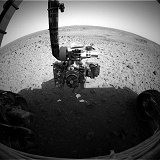 2F127512485EFF0309P1003l0M1 2F127512485EFF0309P1003l0M1 |
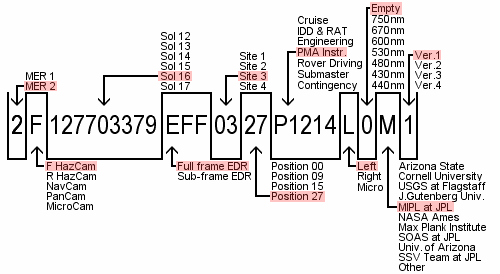 | ||||||||||||||||||||||||
Rear Hazard Camera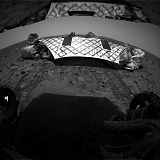 2R127428271EFF0300P1004R0M1 2R127428271EFF0300P1004R0M1 |
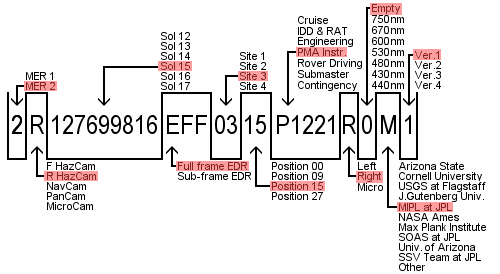 | ||||||||||||||||||||||||
Navigation Camera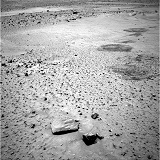 2N127430378EFF0300P1515L0M1 2N127430378EFF0300P1515L0M1 |
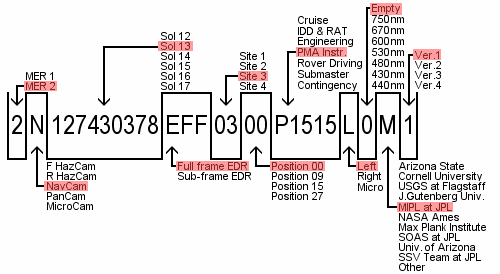 | ||||||||||||||||||||||||
Panoramic Camera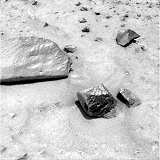 2P127604483EFF0309P2543R4M1 2P127604483EFF0309P2543R4M1 |
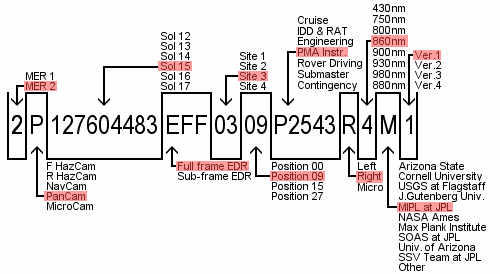 | ||||||||||||||||||||||||
Microscopic Imager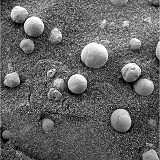 1M129430251EFF0300P2932M1M1 1M129430251EFF0300P2932M1M1 |
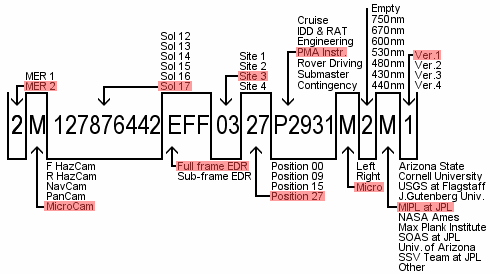 | ||||||||||||||||||||||||
All Images Courtesy NASA/JPL Mars Exploration Rover Mission The Caves of Mars Project is funded by a NIAC Phase II Grant from the NASA Institute for Advanced Concepts. Copyright © 2002-04 - Complex Systems Research; Inc. | |||||||||||||||||||||||||